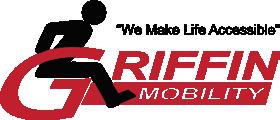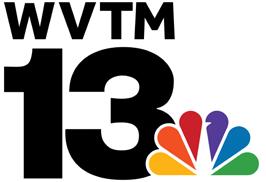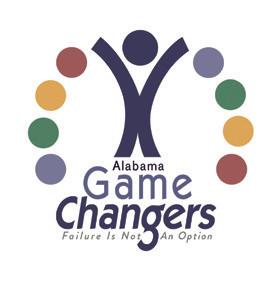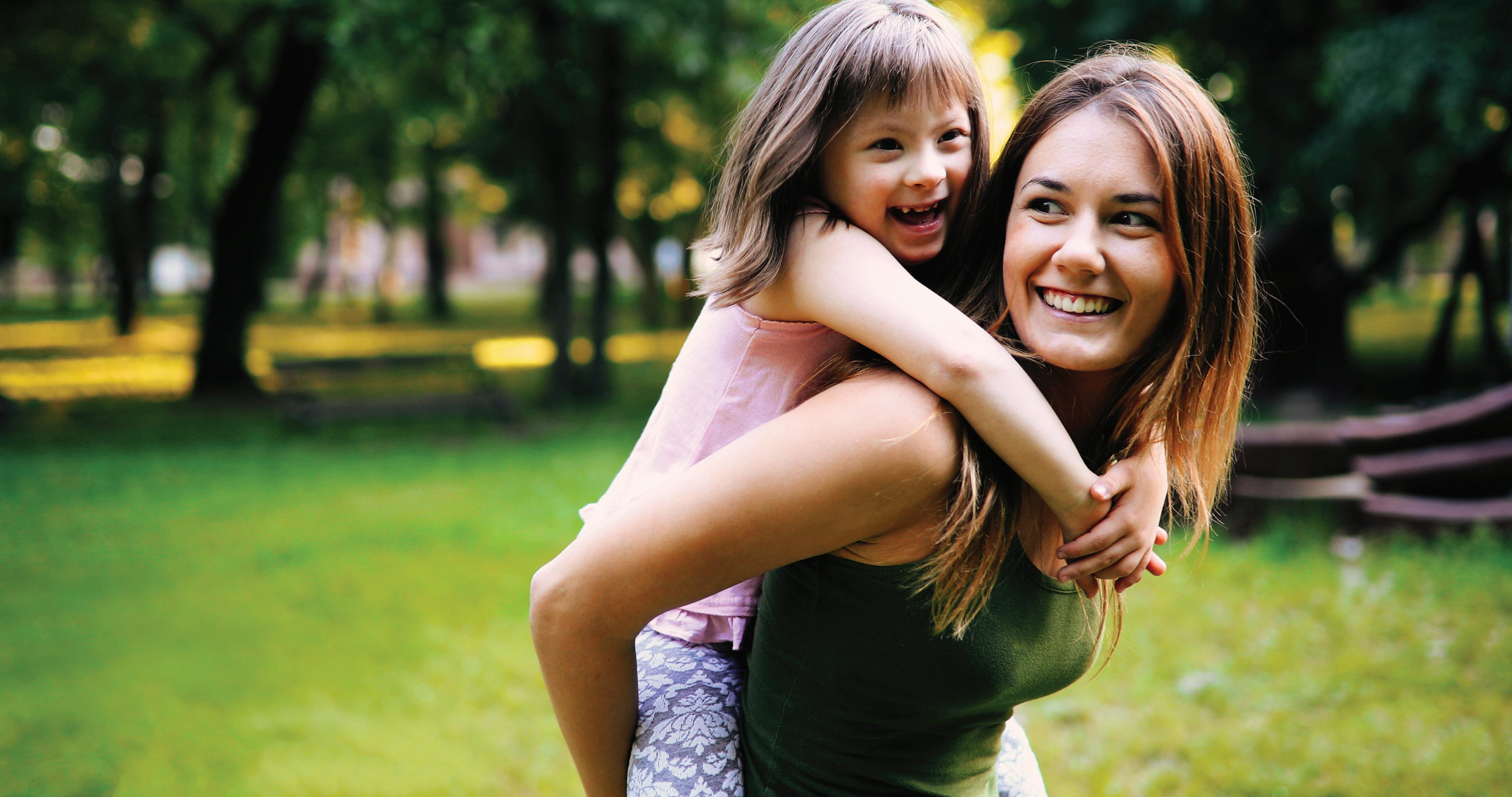PRAMS & HEALTHY BABIES
WHAT NO ONE TELLS YOU ABOUT CHILDBIRTH BABY & ME

BELIEVING IN MIRACLES: MIRACLE ACADEMY
FOSTER CARE, ADOPTION AND LEARNING DISABILITIES



WHAT NO ONE TELLS YOU ABOUT CHILDBIRTH BABY & ME

BELIEVING IN MIRACLES: MIRACLE ACADEMY
FOSTER CARE, ADOPTION AND LEARNING DISABILITIES


Seems like we just wrapped up our February issue and our 30th Annual Camp Expo, and here we are knocking on the door of our combined March/April 2023 issue, as well as our Special Needs Expo on March 18!
Please enjoy this issue committed to special needs, baby and a lot of great other topics like travel, parties and more. Be sure to check out our “new and improved” calendar with a link to our extensive ONLINE calendar. Remember you can also use the online version to take you to the venues with your smart phone! And upload your own events here! Check out the online version here:
https://birminghamparent.com/directory/events/
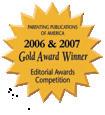


Save the date for our Special Needs Expo on March 18 at the Exceptional Foundation in downtown Homewood/Oxmoor Road, from 10 a.m. – 3 p.m. Admission is FREE. Great information, giveaways, a stage with local entertainment and much more! Contact us for a vendor booth or sponsorship at carol@birminghamparent.com or 205-624-2405. You can also register as a VISITOR or as a vendor here:
https://birminghamparent.com/directory/special-needs-expo/
And we are already planning our BACK-TO-SCHOOL EVENT, the annual Happy Healthy Kids Fair, this year at McWane Science Center Lobby on Aug. 19. Come beat the heat in August and join us for another fun day where admission to the event is free, and we’ll have discount admission tickets for McWane Science Center Adventure Halls. As a visitor, sponsor or vendor, check it out here:
https://birminghamparent.com/directory/2023-happy-healthy-kids-fair/
We are so excited to reveal what 2023 has in store for us and our readers. We are just getting started! As always, we want to hear from you! Do you want other types of stories? What topics and special sections do you enjoy most? Our events? Please e-mail us your comments and suggestions.
Happy Easter, and Happy Spring!
Carol Muse Evans publisher/editor carol@birminghmparent.comABOUT THE EDITOR:
Carol Muse Evans is the publisher/editor/owner of Birmingham Parent magazine, a publication she and her husband David began in 2004. The Birmingham, Alabama-based parenting publication attracts more than 60,000 readers monthly in a four-county area and receives 10,000 hits per month on its website. The magazine has a 20,000+ print circulation, plus several thousand in readership of the digital edition online. It is the only independently audited free publication in our area. Evans is an award-winning writer and editor who has also has written for several other publications as a freelance writer since the late 80s. She is a graduate of Auburn University in journalism and is a graduate of Scottsboro High School. She is married with two grown children and lives in Alabaster. She is a member of the National Federation of Press Women and Alabama Media Professionals.
703 Logan Rd., Suite 150
Clanton, AL 35045
205-624-2405
205-624-2515 FAX www.birminghamparent.com


editorial
PUBLISHERS
David & Carol Evans
EDITOR
Carol Muse Evans
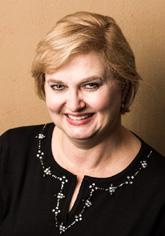
CONTRIBUTORS
American Camp Association
Audra Claire Boyd
Cherie Gough
Dr. Winn Mathews
Juvenile Products
Manufacturers Association

Paige Townley
Sarah Lyons
sales
BUSINESS DEVELOPMENT

Tom Gonzales
SR. MARKETING CONSULTANT
Kayla Fricks
MARKETING CONSULTANT
Ashley Lottes
print & web production

Digtial Doo-Wop
DISTRIBUTION
T&P Deliveries
Legal Counsel

Balch & Bingham LLP
BIRMINGHAM PARENT IS A PUBLICATION OF EVANS PUBLISHING, LLC. Publishers: Carol Muse Evans, David K. Evans Sr. Birmingham Parent (EIN20-0694149) is published monthly by Evans Publishing LLC. www.birminghamparent.com or editor@birminghamparent.com. Birmingham
Parent is © 2023 by Evans Publishing LLC. Family Connections Media ©20212023 by Evans Publishing LLC. All rights reserved. Reproduction in whole or part without written permission is prohibited. Editorial submissions are welcome. For back issues, please send a self-addressed 10” x 13” envelope with $4 for postage and handling.
Spring is in the air! Here is a fun, floral activity to try with your little sprout! Making native plant seed balls is a great way to bring some color to the world while teaching kids the importance of native plants and the environment.
You Will Need:

2 parts potting soil
5 parts pottery clay mix from your local art store
2 parts water (or enough to moisten the mixture)
2 parts native wildflower seeds
A large bowl or bucket to mix ingredients
4 5

Mix the soil, clay and 1 part water thoroughly. There should be no lumps. Add more water until the mixture is the consistency play dough
Add your seeds until they are well incorporated
Take small bits of the mixture and roll into 1 inch balls. They should hold together easily
Dry your seed balls in a box or egg carton for 1 or 2 days

Finally, sow your seeds! Let your little one toss the seed balls into the garden. No need to bury or water them. Just let nature get to work!

To learn more about Itty Bitty Magic City, visit mcwane.org or follow us on social media @mcwanescience







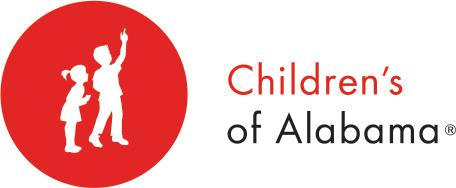



Tiffany Hammond is a Texas autistic mother and autism advocate raising two sons with the same disorder. Hammond’s new book, “A Day With No Words,” will be released May 9.

A colorful and engaging picture book for young readers, the book shares what life can look like for families who use non-verbal communication, utilizing tools to embrace their unique method of “speaking.”
Hammond is also the founder, voice and change-maker behind the digital community fidgets.and.fries where she shares her family’s journey and engages daily with followers and supporters while offering connection and support. Hammond discovered the autism community that didn’t exist when she was originally diagnosed at 18. Her blog’s mission is to educate others about autism and intersectional advocacy, because treating neurodivergent people as actual human beings benefits us all.
“Society pretty much dismisses and ignores the voices of autistic people. That’s what makes my life more difficult. It isn’t really autism

itself; it’s living within a society with a brain that differs from the norm,” Hammond says. “We’re here, we exist.”

The new book, illustrated by Kate Cosgrove (IG @ k8cosgrove), A Day With No Words successfully normalizes communication methods outside of verbal speech and provides representation of neurodiversity and autism in a way that affirms and celebrates. It is available at www.Amazon.com

Ifyou and your child see a child or adult in a wheelchair, instead of looking the other way, look them straight in the eye and say “good morning,” says Birmingham author Mary Anne Freeman. This will teach your child four things:

* a wheelchair is just a ride;
* we’re all created in the image of God, and each person is special and unique;
* it will exhibit the Godly value of treating others with kindness; and

* it will show the Godly valuew of respect.
Freeman has written a children’s book that illustrates that we’re all special, that we can show kindness and respect to all people - and animals. It’s about Oliver,
her long-haired dachshund, who spent 10 of his 15
Let’s Roll, Oliver! is a picture book for ages 4-8. Oliver taught his people a doggie wheelchair wouldn’t slow him down from enjoying life. His story is heartwarming, fun and inspirational.

The book is available at Book Nook by Rocky Heights in Birmingham, AL.
Freeman is a graduate of the University of Montevallo. She and husband Mike love to support the Arts in Birmingham, especially educational endeavors. They have been entertained by many four-legged children, all who gave wonderful memories and fun stories to tell, she says. For more information, and to hear “Oliver’s Song,” go to www.maryannefreeman.com
TwoChildren’s of Alabama physicians are being recognized for combating human trafficking. Kara Huls, M.D., and Ashley Hodges, Ph.D., CRNP, received the inaugural “Outstanding Victim Protection in Countering Human Trafficking” award from the Center for Countering Human Trafficking (CCHT) within the U.S. Department of Homeland Security (DHS) recently.
They received the award on Tuesday, Jan. 31, in Washington, D.C., during the newly established DHS annual awards in Countering Human Trafficking. The awards recognized major counter-human trafficking efforts and contributions by department personnel. The first awards were given out by the Secretary of Homeland Security and the Director of the DHS Center for Countering Human Trafficking in honor of National Human Trafficking Prevention Month.
CCHT recognized Huls, Hodges and other members of Birmingham’s Multidisciplinary Team (MDT). The group includes law enforcement officers, judicial officials and other service providers working together to improve the detection and care of trafficking survivors.

It also works to increase accountability for perpetrators. The team’s work has been recognized as a national model for addressing child trafficking.
Huls and Hodges provide medical care to survivors of childhood sex trafficking at the Sunrise Clinic at Children’s of Alabama. The clinic, founded in partnership with UAB, offers comprehensive medical care to survivors of child trafficking and consultation with service providers and community members who encounter children who may have been trafficked. The Sunrise Clinic is held within Children’s Hospital Intervention and Prevention Services Center (CHIPS Center). It comprises nurses, case managers, therapists and medical staff who are devoted to the care of survivors of child abuse.
Huls is also the medical director of the Children’s of Alabama Sexual Assault Nurse Examiner program, which provides acute medical care and forensic exams for survivors of sexual abuse and sexual assault.

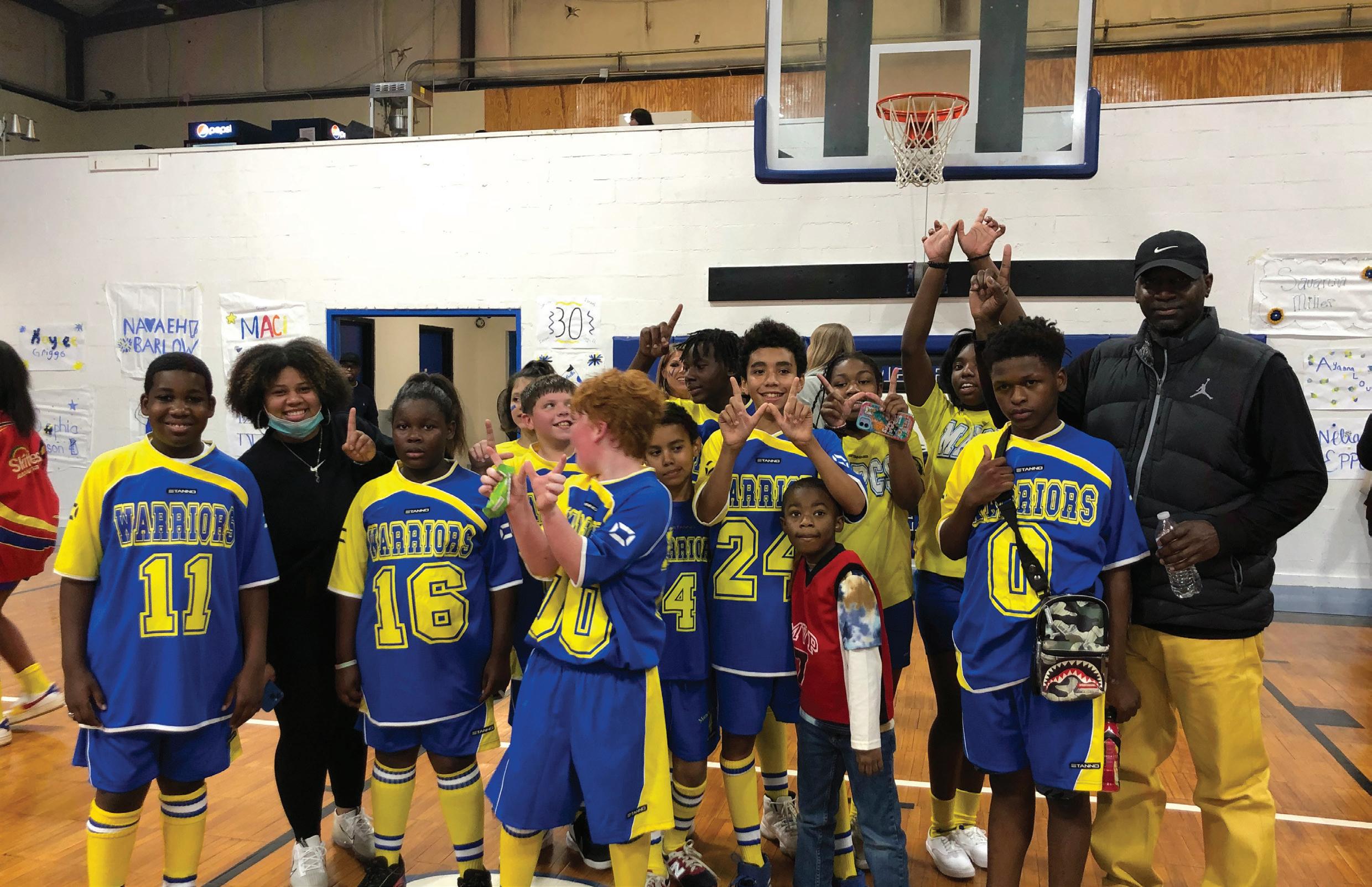 By Paige Townley
By Paige Townley
Somethings are simply meant to be. One of those is Miracle Academy, a small private Christian school situated in the Riley community of western Birmingham. The school was founded in September 2020, right in the middle of the pandemic, but not even that could deter the mission of the school or its founders, Greg and Rosie Mullen. That is perhaps because of the school’s namesake: their daughter, Miracle.
When Rosie was pregnant with Miracle, she began hemorrhaging badly and was expected to lose the baby. “It was to the point the doctor said there was nothing he could do,” Greg adds. “I read Scripture and prayed over Rosie all night. By midnight the hemorrhaging slowed down drastically, and miraculously it stopped by morning. The doctor even said it was divine intervention. That’s when we decided to name her Miracle.”
Miracle was born with Down syndrome. From kindergarten until fifth grade, she attended the same school in the Birmingham City Schools system. Yet after she completed fifth grade, the family found out she wouldn’t be accepted back for the next school year. “We were obviously very distraught and at first didn’t know what to do,” Greg says. “We were left with either sending her to the school she was zoned for, which wasn’t an option, or finding another school. Sudden changes like that can be incredibly difficult for children with Down syndrome.”
While sitting in the office of what became Miracle’s former school, trying to figure out what to do next, Greg got just the message he needed. “Right in that very moment, God began speaking to me,” he explains. “He was telling me to start a school. Right then and there, I decided to start Miracle Academy.”
From that moment, the family began its efforts to establish Miracle Academy, a school that provides quality education to students all around Birmingham, specifically catering to those with special needs and students with IEPs (written documentation that says the student needs special
education services). “We want to be a school where all students can come together in a classroom and learn,” explains Greg Mullen Sr., co-founder and CEO of Miracle Academy. “And that’s precisely what we do. Students partake in the same classroom setting, which prevents special needs students from feeling different from other students.”
Taking it a step further, Miracle Academy doesn’t approach teaching from a cookie cutter standpoint, expecting all students to learn the way they teach. In fact, the school fully expects to adapt how they teach based on the student. “We don’t expect to put something up on the board and have all students understand it,” Greg says. “We know every student doesn’t learn the same. So if they don’t learn the way we teach, we will teach the way they learn. We use that approach in every classroom with every teacher.”
than other something wheelchair van?
typical your for Looking accessible accessible

Looking for your typical van? wheelchair

something other than


That includes providing one-on-one help and even allowing students to take tests verbally instead of in a written format—whatever helps them feel comfortable and do their best. “We focus on teaching in a way to make sure they get it, and sometimes that’s repetition,” Greg adds. “We modify the work to fit them where they can learn on the grade level they are in.”
Thus far, the meet-them-where-they-are approach is leading to significant advances with students. “I can’t put into words the feelings of watching the students succeed,” Greg says. “I saw a student today who couldn’t read when he first got here, but now three months later he’s reading so well. Another student came to us and couldn’t read, but after just a month and a half she was reading very well. It’s exhilarating to watch.”
In addition to educational improvement, many students are making behavioral improvements as well. Some students came to Miracle Academy after having incredibly negative social experiences at their previous schools and are now finding community and friendships and even opportunities to participate in the school’s basketball team. “We’re seeing positive changes in kids who have been bullied at their previous schools,” Greg says. “It’s been amazing to see that they are doing well academically but socially and athletically as well. Many students are forming great friendships—some that never had good friends before.”
The opportunity for new friendships is only growing as Miracle Academy continues to welcome new students. Its first year, the school started with four—and it was fully virtually. Last year, the school year began with 12 students and finished with 17. Today, Miracle Academy is up to nearly 60 students. The school also continues to expand its grade offerings. In year one, the school was strictly sixth through eighth grade, but it has since expanded to serve kindergarten through eighth grade. Greg hopes to soon expand it to include ninth through 12th grades as well. “It is simply amazing to see what God is doing,” he says. “We can take no credit. We simply stepped out on faith. Neither me nor my wife have a background in education, so we know this was a calling on our lives. It’s definitely a leap of faith, but God is sustaining everything. It’s amazing to see the day-to-day blessings.”
Those blessings come in many forms—whether it be watching students thrive or simply God meeting the financial needs of families needing support—and Greg and the entire staff of Miracle Academy are humbled to be able to play a small part in the lives of the students. “We want to better the community by focusing on the academic, social, athletic, and spiritual needs of our students,” Greg says. “That’s our heart—to better their lives and we know the school has been a positive change in their lives. It makes us feel good when we hear a parent talk about how pleased they are with what their children are getting here.”

Paige Townley is a Birmingham-based freelance writer.


For information, please visit autism-alabama.org




For any child or young adult that is a struggling reader, we can provide assessment, diagnostic, and treatment services including those with the following concerns:

• Specific Learning Disorders (reading, writing and math)
• Post stroke, prematurity, fetal exposure, Down’s syndrome
• Complex learning\processing disorders in adoptees & foster children
• ADHD – medication management
• Coexisting Anxiety and Depression – medication management
• Speech and Language disorders
• Occupational therapy -motor\sensory processing difficulties

• Recreation therapy

• Intervention for Adults with reading difficulties
• High functioning autism reading remediation (limited space)
www.alabamagamechangers.org

205-364-2347 Fax: 205-364-2341

2111 Parkway Office Circle, Suite 150 Hoover AL. 35244

In Alabama, an estimated five babies are born with Spinal Muscular Atrophy (SMA) every year. In 2021, there were approximately 183 people living with SMA in Alabama, according to Cure SMA, an organization that provides resources for the SMA community.

SMA is a genetic disease affecting the central nervous system, peripheral nervous system and voluntary muscle movement (skeletal muscular), according to The Muscular Dystrophy Association (MDA). The primary effect is on the muscles, and it is classified as a “motor neuron disease,” according to the MDA.
Symptoms of SMA can range from mild to severe, according to Karen Chen of the Spinal Muscular Atrophy (SMA) Foundation. “In the past, a doctor may suspect SMA when a child was noticeably weak or had a delay in achieving development milestones, such as ability to hold their heads up, sitting independently, standing or walking. If SMA was suspected, the doctor would typically refer the child to a neurologist and order a genetic test (via blood sample) to identify defects in the SMN1 gene in order to confirm the diagnosis,” Chen explains.
Those symptoms tend to impact the ability to walk, stand, sit, swallow and/or eventually move. “SMA patients often develop respiratory illnesses, and bone and/or spial deformities which may require surgical treatment,” Chen adds.
For Alabama mom Logan Nantz, her two-year-old Hayden’s diagnosis almost came without them having time to actually see symptoms. “Hayden was 6 days old when our pediatrician woke us from our sleep early in the morning and called us into her office to deliver the news,” Nantz recalls.
For Hayden, the physical limitations aren’t always visible, so Nantz says it can be hard to explain to others who may be around or helping care for her…So sometimes we have to elect to not do things or participate as we maybe would,” Nantz says.
For Tyesha Jefferson of Birmingham, it has been a totally different story. She wasn’t diagnosed until around age 28, she says. This Birmingham mom says that SMA causes difficulty with basic life functions such as breathing, swallowing and walking.


SMA affects approximately 1 in 11,000 births in the U.S., and about one in every 50 Americans is a carrier for SMA, according to the Foundation. Carriers may not exhibit symptoms, but could pass it along to children.
Her symptoms showed up in adulthood, but now 15 years later, Jefferson says she maintains her strength through physical therapy three times a week, working out four times a week and through an at-home treatment, Evrysdi.
Jefferson and her 10-year-old daughter are happy to share their experiences and offer advice for other parents and kids about how to navigate having a mom with a disability.
Brooklyn Nichols was diagnosed when she wasn’t hitting her “milestones” around 5 to 6 months old, her mom Keanna Nichols says. “If you would attempt to stand her [Brooklyn] on your legs, her legs would go down like wet noodles,” she says. At first there wasn’t a large concern from the pediatrician, but a few months later there was, and she was referred to a neurologist who still sees Brooklyn, now 11 years old.
SMA is an autosomal recessive genetic condition, according to Cure SMA, www.curesma.org. What does this mean exactly? For a child to have SMA, they must inherit two non-working copies of the SMN1 gene – typically one from each parent. People can be “carriers” of SMA, so if only one parent is a carrier, the child is usually not at risk for SMA, though the child does have a 50 percent chance of being a carrier themselves. According to Cure SMA, a DNA test is the only way to know if a person is a carrier, a simple blood or saliva test that can detect about 95 percent of carriers.
The American College of Obstetricians and Gynecologists (ACOG) recommends that all women are thinking about becoming pregnant or who are already pregnant be offered carrier screening for SMA and other genetic conditions. If there is a family history of SMA, carrier screening is high recommended.
What is the prognosis for those diagnosed?
Chen says it varies based on the type of SMA a patient has, and the timing of the treatment. Without treatment, the most severe form of SMA (Type 1) is often fatal before age two, whereas children with more moderate forms of SMA (Type 2 and 3) typically live into adulthood and can have a normal life expectancy, depending on the severity of the respiratory, nutrition and orthopedic symptoms. “However, with the recent approval of SMA therapies, the prognosis is treatment improved,” Chen points out, “even in the most several form of the disease when patients are treated presymptomatically or early in their disease course.”
What are the current treatments?
Chen says there are three FDA- approved treatments in the U.S. All three target the genetic cause of the disease by increasing SMN levels and have shown to be effective in clinic trials. Spinraza is approved for children and adults with SMA. Zolgensma is a one-time SMN gene replacement
therapy delivered through IV and approved for patients under age two. Evrysdi is a small molecule delivered orally daily that targets splicing of SMN2 to increase SMN levels, and it is approved for children and adults.

When Brooklyn was diagnosed, her mom says there were no treatments available and they were told she likely would not live beyond age 3. But medicine has progressed! “The key is early intervention, and not being afraid of being an advocate for your child, especially concerning their medical care and education,” Nicols says. Brooklyn now takes Evrysdi, the only at-home treatment for SMA.

“We have lived on the edge of the ‘rules’ with this diagnosis, and I’m so proud of what Hayden has shown us she is capable of, because we didn’t put her in a box…the past couple of years have taught us to live in the present, much more than we ever knew how before our daughter was born,” Nantz adds.
FOR MORE INFORMATION:
» www.curesma.org
» www.mda.org/disease/spinal-muscular-atrophy
Nantz says to be sure to “Trust your gut. And don’t take ‘no’ for an answer.”Carol Evans is publisher and editor of Birmingham Parent.
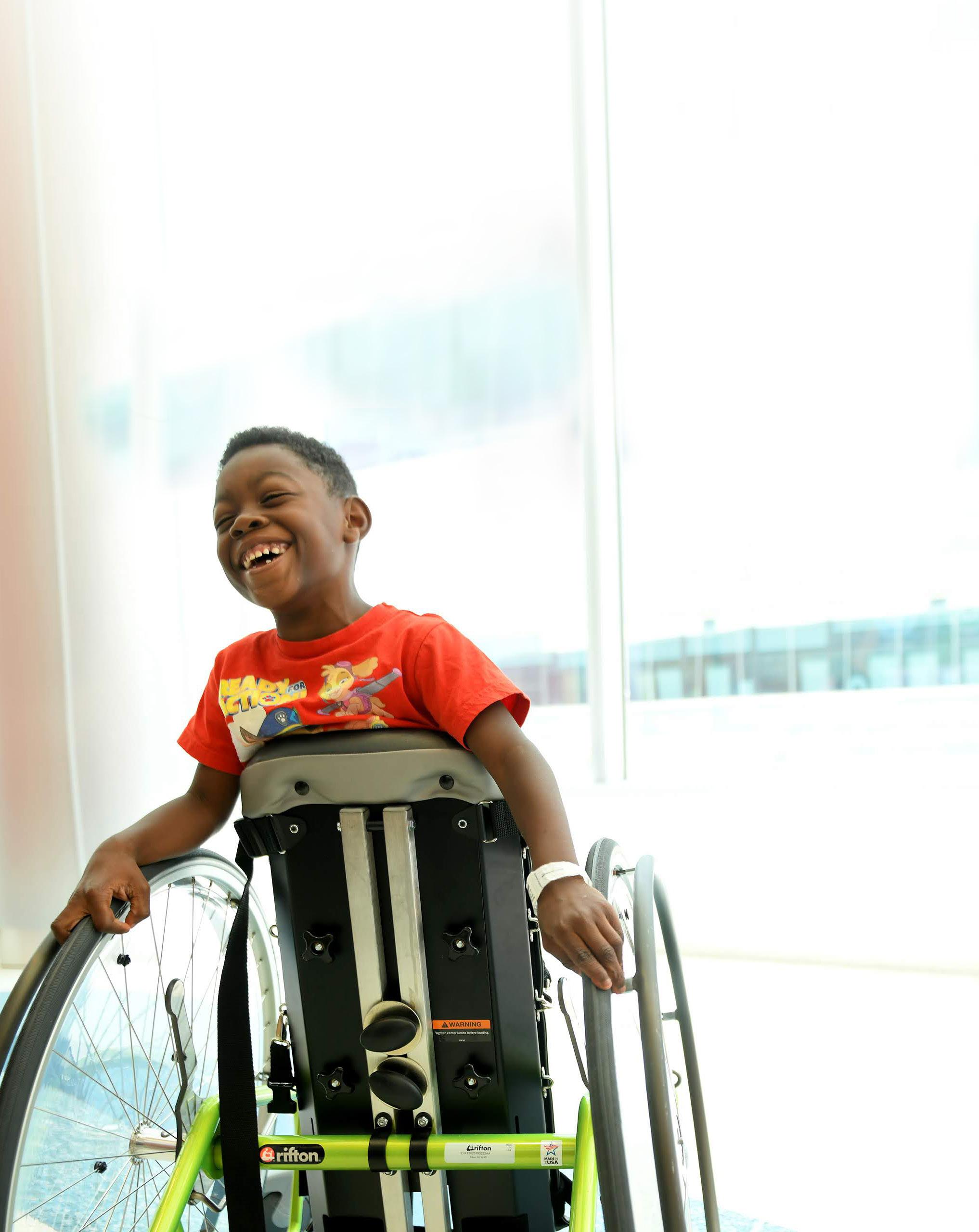 By Carol Muse Evans
By Carol Muse Evans
Our world is in a season where it feels as if the number of children struggling to read and to learn is multiplying exponentially. The struggle for children in foster care and going through adoption is even greater statistically. Recently, we talked with Karen Belcher, Co-Founder of Alabama Game Changers, a 501c3 nonprofit neurodevelopmental medica center located in Hoover, about learning disabilities, particularly for children of foster care and adoption.
“Dyslexia is a specific learning disability that affects the ability to read and process words,” says Belcher. “It is the most common issue that we see in our center.”
Dyslexia can be a disability in isolation or it can be accompanied by any of a number of other challenges, including writing, spelling, math, sequencing, processing, word finding, etc., according to Belcher. The incidence of dyslexia in the general population is between 10-20 percent. However, what may surprise you is that this number increases significantly in the adoption/foster care population.
According to Belcher, more than half of the children who come to the center seeking help are adoptees. “They tend to have more complex learning challenges as well. It is rare that we see dyslexia in isolation in these children,” she says.
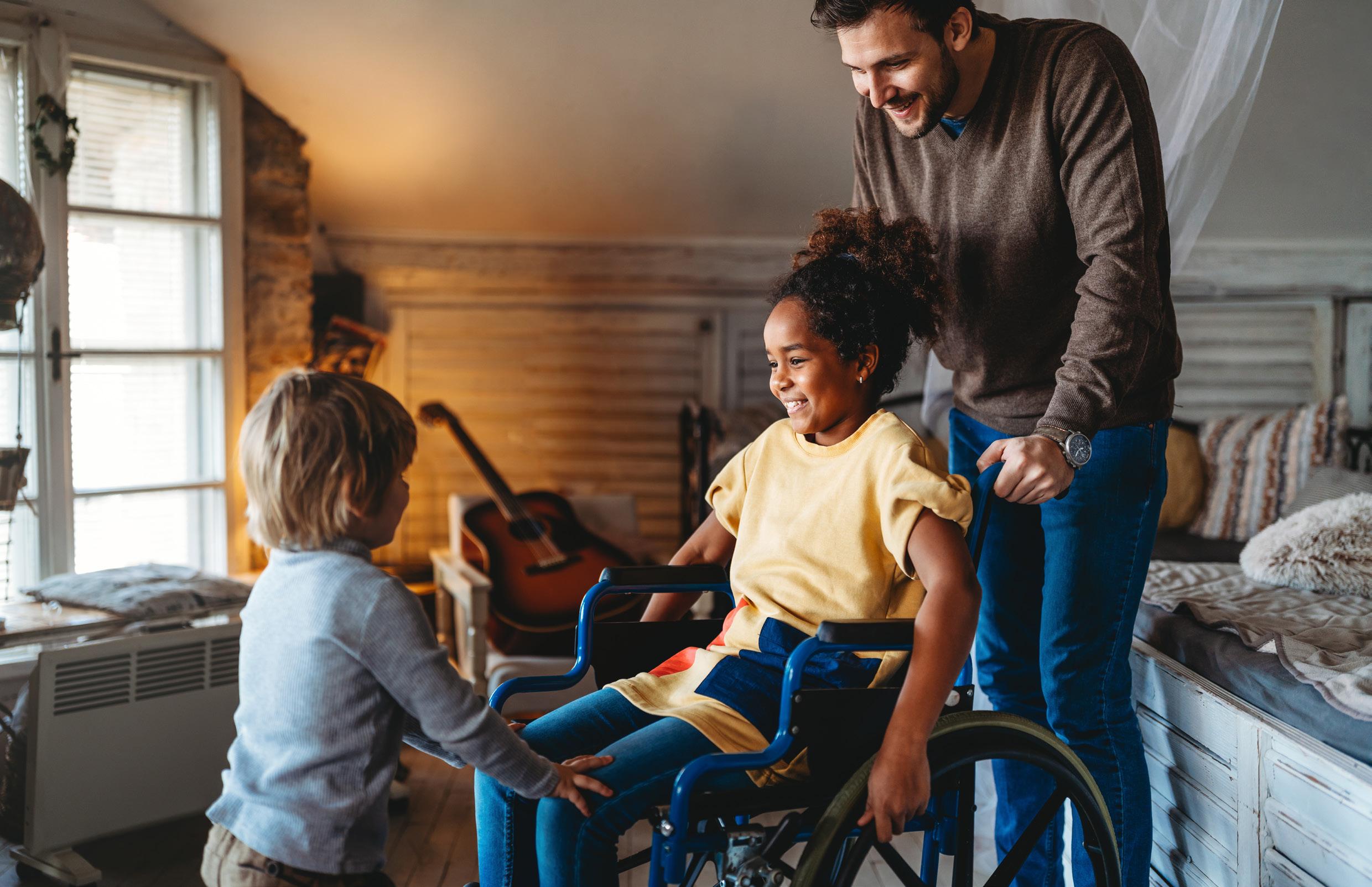
Belcher is no stranger to adoption or learning disabilities. She is a 35-year veteran pediatric nurse and adoptive parent. Her daughter has spent the better part of her 17 years overcoming learning challenges. “Adoptive/foster parents know that when they come to Alabama Game Changers for help, they will work with professionals who truly understand the complexity of their child’s need,” Belcher explains.
According to the American Academy of Pediatrics, the incidence of learning disabilities in the adoptee/foster care population is double that of the general population. Pediatric healthcare professionals fear that the number is actually much higher. Dr. Jennifer Chambers (also an adoptive parent) and founder of The Adoption Clinic at UAB & Children’s Hospital in Alabama, says, “At the Adoption Clinic, we do assessments on children who are newly adopted. We also evaluate children who have been with their families for years but are struggling in some way emotionally or educationally. Because these children usually have a history of multiple transitions, foster care, orphanage life and/or neglect, they are significantly at risk for learning disabilities,” Chambers points out.
“The brain is growing rapidly in the first years of life. Any adverse events during that time can negatively impact the way a child learns,” Chambers continues. “At our clinic (The Adoption Clinic) we screen for learning differences routinely. While I do not know the numbers exactly, it seems like 50 percent of these children have some type of learning difference that needs to be addressed prior to them succeeding in a school setting. If these learning differences are not addressed, the child is prone to development anxiety, depression or difficult behaviors that impact their relationships both at home and in school. These learning differences must be addressed for the child to reach his or her full potential.”
There are a number of factors that contribute to the struggles seen in these children. Research indicates that elevated cortisol (stress hormone) alone in a biological mom, while pregnant, can interfere with brain devel opment and connectivity, Belcher points out. “Most of the biological mothers of these children were under significant stress in their pregnancy. When you couple that with separation after birth, orphanage life, possible exposure to substances (before or after birth) such as lead or harmful organisms in drinking water, lack of one-on-one caregiving, you can see how a developing brain can be impacted,” says Belcher.
When people with extraordinary talent and passion are given the technology, the facilities, and the support, they achieve great things. The discoveries and innovations happening today will help shape the future of treatments and lead to cures. And it benefits not only the patients and families who come to Children’s of Alabama, but people across the country and around the world for years to come.
Childrens AL •org

Whether inherited genetically or acquired due to adverse circumstances, one thing is common in learning disabilities, early identification and intervention is crucial to future success, Belcher says. The Adoption Clinic and Alabama Game Changers collaborate frequently with these children.

“We are on a mission to identify these kids as soon as any red flag is seen,” Belcher says. “We know that the most successful intervention is one that takes a neurodevelopmental, trauma and attachment informed approach.
“Because the state child welfare system can be pretty complex and the educational system can be pretty complex, and the family court system can be pretty complex, instead of asking our foster parents to learn those systems and learn how to maximize those systems, our social workers can act as a buffer between that family and those really complex and complicated systems,” Marshall says. Oftentimes they are able to leverage the systems that exist to get the maximum amount of resources available to the child.”
The social workers know how to ask for things because they have done it so much, adds, whereas a parent can get overwhelmed pretty quickly. So if there is an IEP meeting, the ABCH social worker may be in attendance with the foster parent. They know what services the child is entitled to and can advocate to ensure that the child is getting all the services that they need. They are a tremendous resource in navigating a path for these at-risk children, Marshall explains.

It is said that it takes a village to raise a child. Birmingham has multiple organizations who understand the complex needs of children of adoption and foster care. There is a beautiful collaboration among Alabama Game Changers, The Adoption Clinic and the Alabama Baptist Children’s Home to recognize needs early, initiate interventions\services and to be strong advocates for these children, according to their leaders.
AGC will host a fundraising concern featuring well-known Alabama singer and American Idol winner Taylor Hicks at 7 p.m. on May 19, 2023 at the Wright Center at Samford University. Learn about how to buy tickets to help make services available to all children at...

https://alabamagamechangers.org/agc/.

“If an initial cursory screening (often completed at another clinic or organization) is indicative of a problem then we will want to complete an evaluation to determine the extent of the deficits. Once we know where the problems are, we get busy implementing an intervention strategy that is also trauma-friendly because we know this is more than just a reading issue. The child must be considered with all that he/she has experienced in life up until now. We work to overcome anxiety, teach self-regulation, build coping skills in addition to addressing the developmental reading and learning deficits,” Belcher explains.

There is no shortage of at-risk children in the state of Alabama. According to Rod Marshall, Chief Partnership Officer for Alabama Baptist Children’s Home (ABCH), there are currently 6,000 children in the foster care system. The average stay in foster care is 6-9 months, he says. The goal of fostering is to reunite families.
“About 90 percent [of foster children] will be reunited with their family or relatives” says Marshall. In the meantime, their social workers are very active in supporting the foster family. They have contact at least twice a month and a in-home visit at least once a month, sometimes more often if needed, Marshall explains.



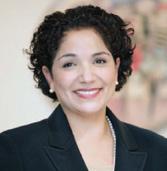








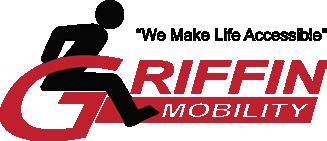


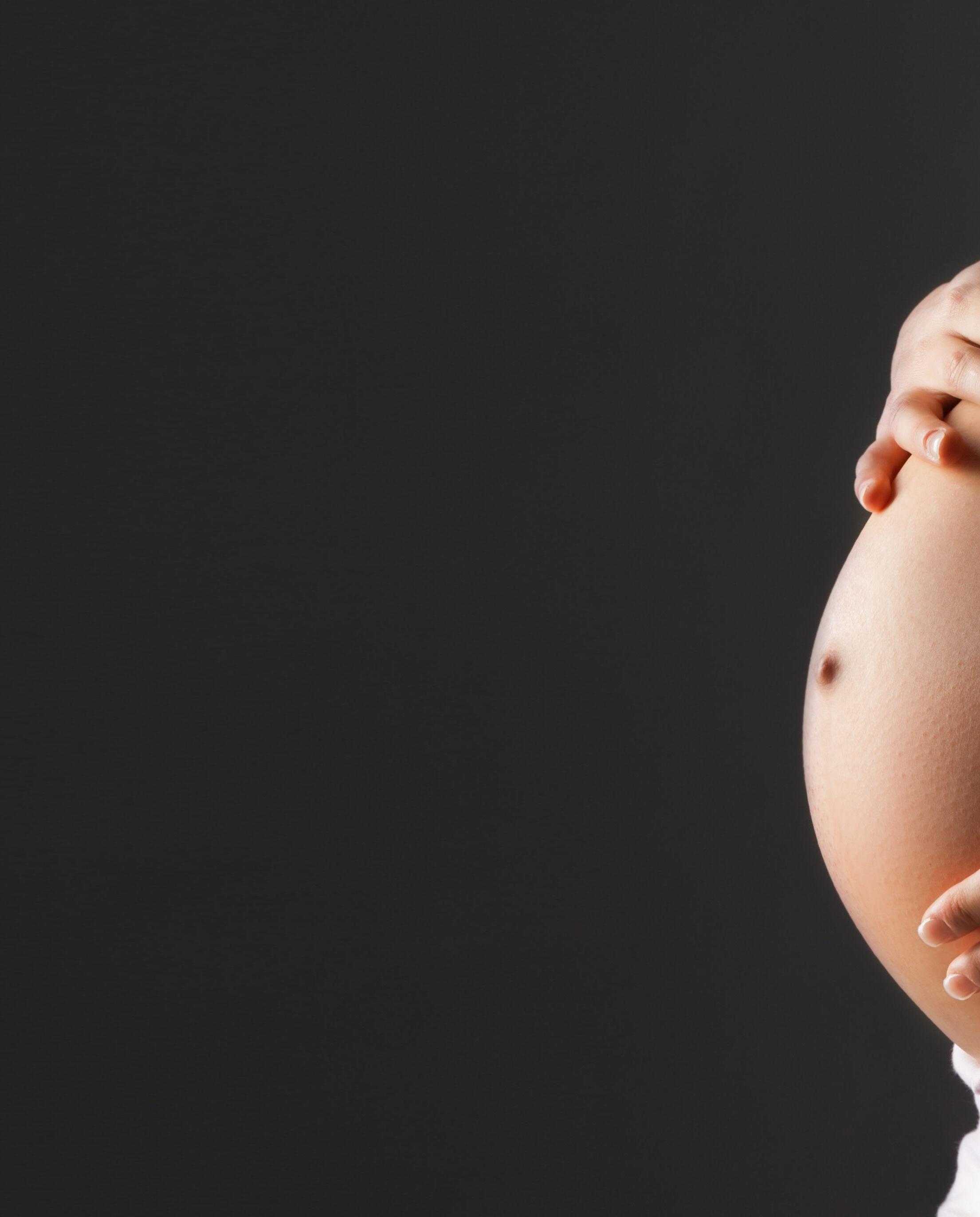
Now that you're pregnant, you're dutifully attending your childbirth classes and reading and viewing everything you can about the stages of labor and birth. But classes, books and online resources tend to give you the big picture, not the surprising— and sometimes embarrassing—details, like the fact that during labor--especially if you haven't been given pain medication--you may find yourself screaming, crying, even swearing at your partner or the doctor. Or you may strip.
“I've had patients who were so uncomfortable that they pulled off their gowns and delivered naked,” says Lisa Fraine, a certified nursemidwife. These reactions are common; they're simply a response to pain and exhaustion.
You can also blame hormones: “Labor causes a shift in your estrogen and progesterone levels, which is akin to a major case of PMS,” says Henry Klapholz, M.D., professor of obstetrics and gynecology at Tufts University School of Medicine in Boston.
If you do lose it, don't feel bad. Doctors and nurses are used to these reactions. But if you're uncomfortable with the idea of such a display, be prepared for your delivery. “Women who take childbirth classes tend to stay calmer than those who don't,” Klapholz says.
Because knowing what to expect makes for a less stressful delivery, we've asked the experts to spill the beans on more common (yet seldomtalked-about) scenarios.
You throw up.
Who knew that vomiting during labor is normal? I was certainly didn't-until the birth of my first daughter nearly three years ago. One reason it happens: Epidurals can cause hypotension, a sudden drop in blood pressure.
“An early sign of this is nausea and vomiting,” says David Birnbach, M.D., past president of the Society for Obstetric Anesthesia and Perinatology. But throwing up can occur even if you haven't been given an epidural, either because of the pain you're experiencing or as a result of food sitting in your stomach (digestion usually stops during labor). To keep vomiting to a minimum, eat only light foods during the earliest stages of labor, and stop eating completely—and drink only clear liquids—once you're in active labor.
“Nearly 50 percent of women complain of shivering and chattering teeth chattering,” Birnbach says. It has nothing to do with being cold. In fact, your body temperature may rise a degree or two during labor, making you feel hot. The jury’s still out on what exactly causes this, but the latest
evidence points to blood incompatibility. “During labor, a small amount of fetal blood crosses into the mother’s bloodstream,’ Klapholz says, “Studies show that when there’s an incompatibility in blood type between mother and baby—for example, your blood is type A and your baby’s is type B— the mother shakes, shivers and get chills.”
You make nasty noises.
As a baby descends through the birth canal, air gets forced out the anus, so be prepared to pass gas. This is especially likely if you've had an epidural, which paralyzes the anal sphincter.
Another unpleasant side effect of childbirth: You may have a bowel movement right on the delivery table. “It’s purely a space issue,” says Arianna Sholes-Douglas, M.D., a high-risk pregnancy obstetrician.
“As your baby’s head makes its way through the birth canal, the rectum gets flattened and its contents pushed out.” In any event, don't worry. “These bodily functions happen all the time—there’s very little we haven't seen or heard before,” says registered nurse Deborah Robbins.
In the heat of the moment, it can be easy to forget what they taught you in childbirth class. “I couldn't remember the various positions I was supposed to get into to ease labor pains,” says new mom Elizabeth Estes Niven. “Instead, I stayed flat on my back, gripping the bed railing.” You’re also likely to forget many of the details of the birth. So be sure your partner takes plenty of photos or captures it all on video.
It might not be love at first sight. Don’t feel bad if your first reaction to holding your newborn isn't overwhelming joy. You’ve just been through an exhausting experience and need time to recover. If you can, try breastfeeding—then let a nurse take your child so you can get some rest. That’s what I did after 17 hours of labor and a C-section. But after an hour, I had them bring back my baby girl and was immediately smitten.
The nerve-racking beep of the fetal monitor. All those bodily fluids. Your roller-coaster emotions. Childbirth can be just as difficult for your partner. “We've had to ask partners to leave the room,” says obstetrician Elise Santana, M.D. “Seeing a spouse in that much pain can be upsetting, which only makes his partner more nervous.
“One father fainted when his wife delivered,” Klapholz recalls. “The poor guy broke his leg and had to be admitted to the hospital.”
If you suspect your partner might not have the stomach for labor, bring a second person along. Your best bet: a friend or family member who has given birth herself and knows just what to expect or a birth doula.
Sandra Gordon is an award-winning freelance writer who delivers expert advice and the latest developments in health, nutrition, parenting, travel and consumer issues.

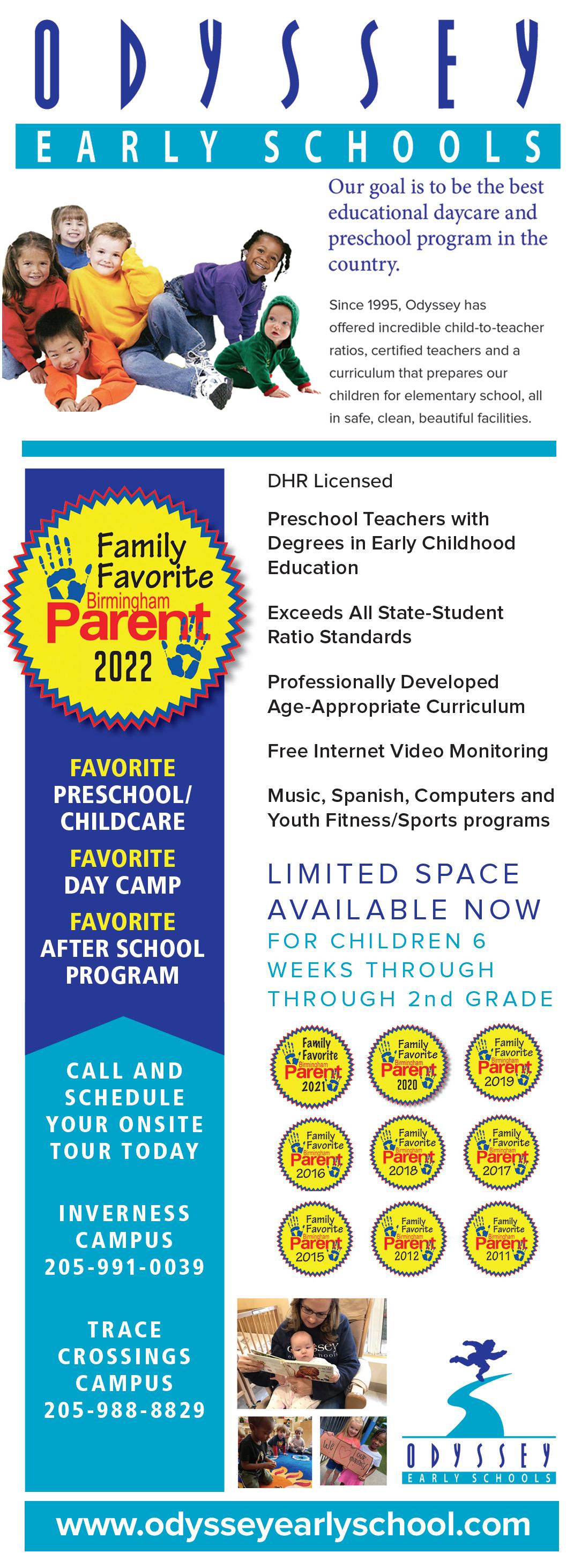
TheUnited State currently has the highest infant mortality rates among developed countries, and the current infant mortality rate in 2022 was 5.5 deaths per 1000 live births (7.2 deaths per 100 live births in Alabama), according to Kathy Ereshena, Program Coordinator II of the Pregnancy Assessment Monitoring System (PRAMS), Survey Research Unit, School of Public Health in Birmingham.
PRAMS is part of the Center for Disease Control and Prevention (CDC) initiative to reduce infant mortality and low birth weight and promote safe motherhood. It began in 1987 and is available right in the Birmingham area. Alabama is one of 47 states currently participating in PRAMS, according to the Alabama Department of Public Health (ADPH).
PRAMS is important because it provides data for state health officials to use to improve the health of mothers and infants, according to Ereshena. PRAMS allows the CDC and the state to monitor changes in maternal and child health indicators (i.e., unintended pregnancy, prenatal care, breastfeeding, smoking, drinking and infant health), Ereshena says.
What exactly can the state and the CDC do with these survey responses? According to Ereshena, here’s how this information helps:

• Modify existing public health programs
• Develop and implement programs or interventions to improve maternal and infant death
• Identify groups of woman at high risk for infant health problems
• Measure progress in reducing negative pregnancy outcomes on a statewide and nationwide basis
• Obtain data for the Title V Block Grant needs assessment
• Support legislative proposals
• Inform communities about the prevalence of regional prenatal behaviors.

In Alabama, PRAMS mails a survey to randomly-selected new moms which asks about their lives before, during and shortly after their pregnancies, Ereshena says. “By sharing, they can help us understand why some babies are born healthy and others are not. The information collected is used in developing health care programs and policies, and it helps doctors and nurses improve health care while making better use of health resources.
You can learn more at the ADPH website, www.alabamapublichealth. gov/prams/ including access fact sheets, resources, and watch informative videos. According to the ADPH, PRAMS offers materials for the use of residents in Alabama. Brochures are available in Spanish and English, and to request materials, call 334-206-2923, email tara.harriel@adph.state.al.us or visit www.alabamapublichealth.gov/prams/assets/prams_brochure.pdf to download a PDF of the “Health Alabama Shine” flyer. PLEASE NOTE, according Ereshena, you cannot request to participate in the survey. It is a randomly selected group.

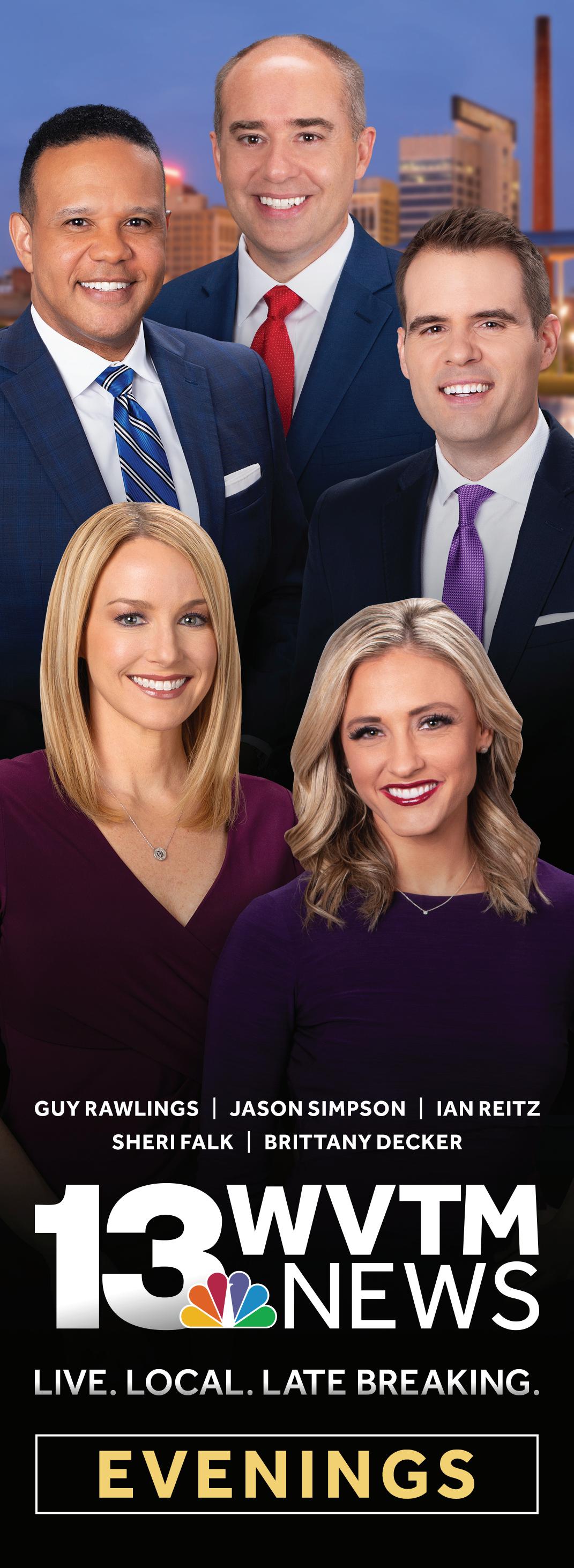









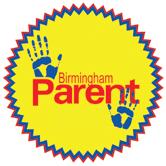






» Put babies on their backs for all naps and at night
» Use a firm, flat sleep surface
» Never sleep with your baby
» Remove pillows, blankets, and stuffed animals from the crib when baby is sleeping

» Always used a properly fitted mattress in baby’s crib
» The safest place for baby to sleep is in a bare, JPMA Certified crib or other approved sleep product
Baby product manufacturers have recently made it even easier for parents to differentiate between sleep and play products by developing a uniform set of marketing best practices and guidelines addressing product imagery, name, design, marketing and warnings to ensure approved product use is clear at point of purchase as well when in use.
Motor vehicle crashes are a leading cause of injury and death for American children, and proper use of car seats, booster seats and vehicle seat belts is the best defense.
Navigating the choices that come with being a new parent can be stressful, but none is more important than those that help keep baby safe.
The good news is baby products are safer than ever, and parents today have access to many innovative choices to help care for their new addition throughout the day - from playtime to sleep time and everything in between.
While there’s a great deal of information available on the best products and practices to keep baby healthy and safe, it can be challenging for new parents to sort through all the recommendations and determine the right products for baby’s age and developmental stage.
To help make the decision-making process a bit easier, the baby products companies that make up the Juvenile Products Manufacturers Association, alongside other infant health experts and advocates are helping take away the guesswork when it comes to how and when to use infant and childcare products.
While baby products like car seats, cribs, strollers and bouncers are staples for helping care for infants and young children, it is important that parents choose a product appropriate for their child and use it only as intended each time.
Based on the latest expert guidance and recommendations, JPMA recently launched a new Choose & Use Resource Center, which offers simple, easy-to-follow guidance on how to choose and safely use developmentally appropriate baby and children’s products, with a focus on safe sleep.
The majority of injuries to infants and children are preventable, and ensuring that products to care for your little one are used only as intended is an important start. Experts recommend the following tips to keep baby safe during two critical times – sleep time and on the go.
Some baby products are approved for sleep, while others are only intended for use when baby is awake. Baby products designed, approved and marketed for sleep can be used for supervised and unsupervised sleep, including naps and overnight sleep.
» Children should ride rear-facing until they reach the maximum rear-facing weight or height allowed by the manufacturer’s instructions.
» Children who exceed rear-facing limits should ride in forwardfacing car seats with harnesses, with parents securing the top tether to the vehicle anchor and installing the seat according to manufacturer instructions.

» Parents should delay transitioning an infant or child to the next stage until they’ve reached the maximum height and weight allowed by manufacturer instructions.
» Do not use a secondhand car seat or booster seat, especially if it is beyond its useful life period indicated by the manufacturer, has ever been involved in a crash or has missing or damaged parts or labels.
Activity-related products offer great benefit, aiding parents and caregivers when used correctly by providing a safe option for supervised care of infants and children.
Parents can access a full list of child safety recommendations at jpma. org/parents
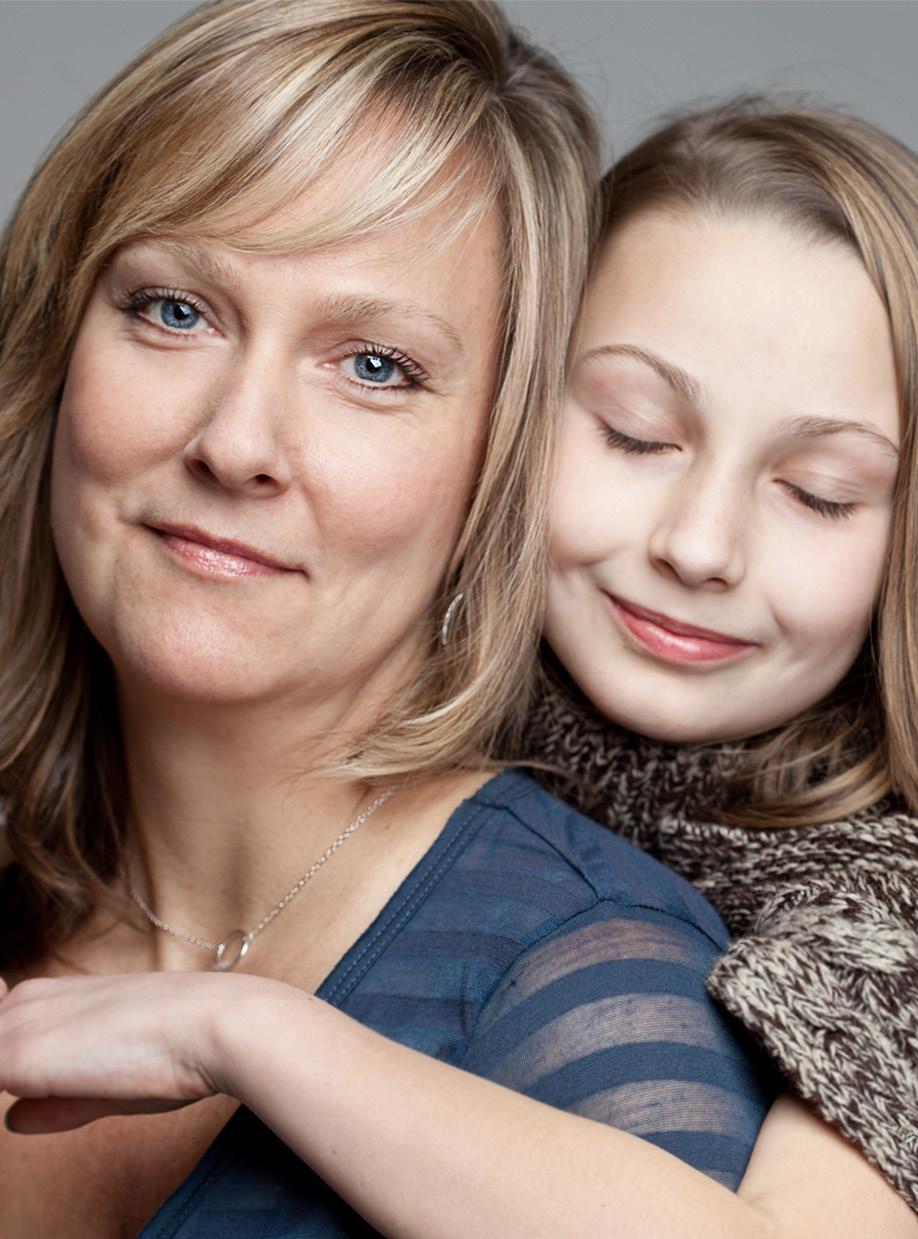





You’ve planned everything for your child’s party. Then you get an RSVP from a classmate with a food allergy. What do you do?
According to FARE (Food Allergy Research & Education), 1 in 13 kids have a food allergy. What’s the best way to accommodate this guest and still plan the perfect party? Parents of kids with food allergies want party hosts to know they don’t expect the whole event to revolve around accommodating their child. Here are their tips for creating a fun, safe party for all without it becoming a burden.












Moms of kids with food allergies agree the best way to make them feel at ease is to ask about dietary restrictions when sending out the invitation. Jenn Williamson, whose 11-year-old daughter has a peanut allergy says, “It lifts a weight and lets me know that the host is more approachable. I feel comfortable talking with those parents knowing they’re aware of food allergies and are open-minded about discussing it.”
Tiffany Hinton, mom to three girls with severe food allergies and blogger of Gluten Free Mom Certified, says, “When someone asks if there are any food restrictions, it allows me to be an advocate for my children, share information to dispel myths and help keep them safe.”
Kids with food allergies are individuals and each family is unique. Be open to communication. Know that parents are grateful for any effort made to include their kids.
After sending invitations, expect contact from parents of a child with allergies. A phone call or conversation in person best facilitates clear communication. They may ask what foods you’ll be serving, how the cake will be decorated and if there will be games that include food items (such as a piñata). This lets them know ahead of time what may need to be modified.

My 6-year-old daughter has celiac disease and eats only gluten-free foods. With pizza and cake as standard party fare, parties pose a challenge. I usually provide a snack bag with foods that are safe replacements for her. I can even decorate a fancy cupcake to fit the party theme. It helps my daughter feel included and she gets excited for the party when decorating with me. Since one crumb can make her sick for weeks, I prefer to do the baking to make parties fun and safe for her.
When a food-allergic guest arrives, review how you’ll handle food safety. Even kids who are old enough to be dropped off need this reassurance. Make sure you understand the child’s needs or ask the parent for clarification. If it puts you more at ease, ask parents to stick around. Ask for a contact phone number in case of an emergency.
If an Epi-pen is necessary, parents will train the host or stay at the party. Williamson reviews the steps with hosts before dropping her daughter off at a party. And since her daughter is older, she feels comfortable knowing her tight-knit group of friends looks out for her.
Instead of big bowls of chips and pretzels that invite cross-contamination (a problem for kids with nut and gluten allergies), use individually wrapped bags. One of the kindest things a friend did was set up a table at her daughter’s party that included only gluten-free foods. My daughter could safely eat anything at the party and I didn’t worry about cross-contamination.
• Allow party guests to use the kitchen to prepare food they brought.
• Include non-food items as prizes and party favors.









• Allergy-free bakeries are fairly common now. An internet search will help you find those nearby.


While celebrating with friends is lots of fun, parties can be a real challenge for parents of kids with allergies. Going the extra mile to create a normal party experience for their children is a gift of kindness that is greatly appreciated.









Manyschool curriculums, including science, technology, engineering, and math (STEM) has increased in popularity over the last few years as research has shown problem solving and critical thinking skills to be better developed when kids have participated in STEM projects in the classroom.

However, some educators are suggesting that arts should be added to give kids a more well-rounded education. This idea is called STEAM. (STEM + Arts = STEAM) Let’s take a look at both sides.
The idea of STEM came from the need to change the way we educate kids so when they enter the job force they possess the skills needed for high demand jobs. “Students need more in-depth knowledge of math and science, plus the ability to integrate and apply that knowledge to solve the challenges facing our nation,” according to www.edweek.com. “Children who study STEM also develop a variety of skills that are essential for success: critical thinking and problem solving, creativity and innovation, communication, collaboration, and entrepreneurship, to name a few.”
Supporters of STEM say that projects promote kids’ artistic abilities because creativity and innovation must be used to come up with solutions to problems. Therefore, they do not see the need to intentionally add the arts. STEM projects are already promoting creativity, communication, and writing skills. Simply taking a look around will show us that engineers are indeed a creative group as we witness the many marvels they have designed.
Some educators believe that STEM should remain as it is and art should be supplemented separately in the classroom because it gives kids the opportunity for individual artistic expression vs. the team projects that are used in STEM.

Those who support the need for art to be added to STEM projects include not just art, but also language arts, social studies, physical arts, fine arts and music. All of these subjects would be represented by the “A” in STEAM. Supporters of STEAM are not suggesting that more time should be spent on art and less on math and science, but that adding the
artistic component will promote critical thinking, design, and other artistic talents in creative ways. This will make STEAM projects more flexible and fun, which will appeal to a wider variety of children with different interests and strengths.

STEAM is a relatively new idea and educators are not sure what adding arts to science, technology, engineering, and math looks like in a classroom setting. If you are homeschooling, it is something you likely want to consider. One thing remains constant – we want to give kids the lifelong skills they need to be successful both in school and the workforce. Our world has changed significantly in the last 30 years, and we need to adjust accordingly to keep kids engaged in the classroom and prepared for the future.
» https://www.edweek.org/tm/articles/2014/11/18/ctq-jolly-stem-vssteam.html
» https://www.teachhub.com/stem-vs-steam-what-is-better

Q: What is your name and where do you teach, what grade?
A: My name is Laura Kitchen, and I am a teacher at the Alabama School for the Deaf. I am currently the sole preschool and kindergarten academic teacher for the Listening and Spoken Language Program. In this program, we provide a rich auditory language learning environment for deaf/hard of hearing students who have good auditory access to speech using their hearing aids and/or cochlear implants.
Q: How long have you been a teacher?
A: This is my eighth year teaching at Alabama School for the Deaf in the Listening and Spoken Language Program. I moved to Alabama from Niagara Falls, New York, in August 2015 to work in this amazing program. This was my first job out of college, and I have been working here ever since.
Q: Why did you want to be a teacher?
A: I have always wanted to be a teacher. Since elementary school, I would play teacher with my brother and my stuffed animals every chance I had. My passion for Deaf education didn’t come until college, but now I can’t imagine doing anything else. I love having the opportunity to change my students' lives every single day.
Q. What is your favorite thing about being a teacher, and what is the most challenging?
A. My favorite thing about teaching is making the kids laugh. My students have to work 10 times harder than the average 3- to 6-year-old, and if I can make their time at school a little bit more fun, I’m going to take every opportunity to do that. If someone were to walk into my classroom,

they're probably going to see me acting silly, dancing or making jokes to make the kids laugh. Yes, the kids have to work hard, but we can have a good time doing it.
Q. Is there anything you'd like to share?
A. My husband and I grew up in Niagara Falls, New York, and moved to Alabama in 2015 for me to work at AIDB. We were married in 2017 and welcomed our son in 2019 and our daughter in 2021. When I’m not teaching, I enjoy baking sugar cookies, planning parties and being the best mom I can be to my children.
Laura has won $100 in gift cards from the Parent-Teacher Store in Hoover and Birmingham Parent. To enter your favorite teacher, visit https://birminghamparent.com/directory/my-favorite-teacher



Go to:
Visit our website and nominate your favorite teacher! www.birminghamparent.com/directory/my-favorite-teacher

We will randomly pick a winner each issue and feature them in the NEXT issue of Birmingham Parent!
That teacher will also win $100 in gift cards to spend at the Parent-Teacher Store! You'll need your teacher's first and last name, the grade(s) they teach, the name of the school and the city in which it is located. ONLY GOOD FOR ALABAMA SCHOOLS.

Courtesy of the American Camp Association
Selecting a camp for your child can be exciting. You know that camp is the right choice. But now you need to figure out which camp is the right choice. The following is a list of questions designed to help you steer your search:


vIs the camp Accredited by the American Camp Association? What other regulations or licenses does the camp follow?
vWhat kind of training does the staff receive on safety, supervision, mental health awareness, problem solving, and other areas pertinent to working with children?
v What is the most important thing for families to know about your program?
vIs the price all-inclusive, or are there extra charges for uniforms, specialty programs, transportation, tee shirts, trips, etc.?
vIs transportation available and what are the specifics?
vHow does your camp handle special diet or physical needs?
vIn what way may I communicate with my child while they are at camp? With the staff?
vAre there family visiting days?
vCan you provide references that I may contact?
vWhat is unique about your camp?
If looking at a day camp:
v Is before/after camp care available?
v If so, who cares for the children, and what activities are offered? Is there an additional cost?
vAre meals provided? At what cost?
vHow and where do I drop off or pick up my camper?
For more information about camp including helpful tips on finding the right camp, contact the American Camp Association New England or visit www.acanewengland.org
Once Upon a Fairytale
4K & 5K
Once Upon a Ballet

1st-3rd grade
Adventures in Enchanted Lands
1st-3rd grade
Dance Exploration
3rd-6th grade
Dance Workshop
6th-12th grade
JUNE 5-AUGUST 5
Moving Together
12-24 months with a grown up
Movement-to-Music
ages 2-4 with live piano accompaniment
Dance for Students with Disabilities
ages 8-13: Movement-to-Music, Ballet/Modern
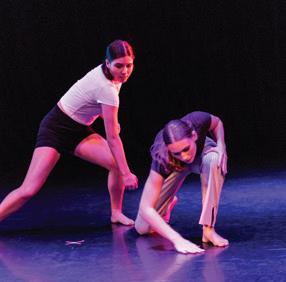

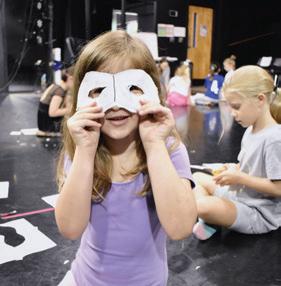



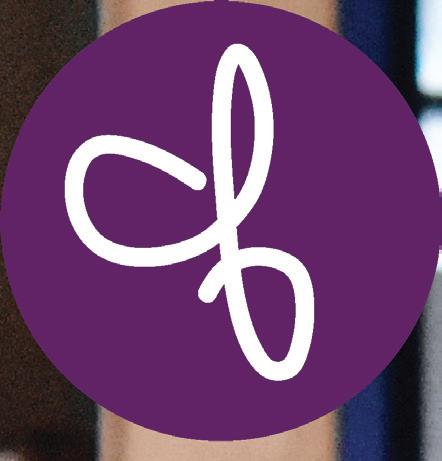
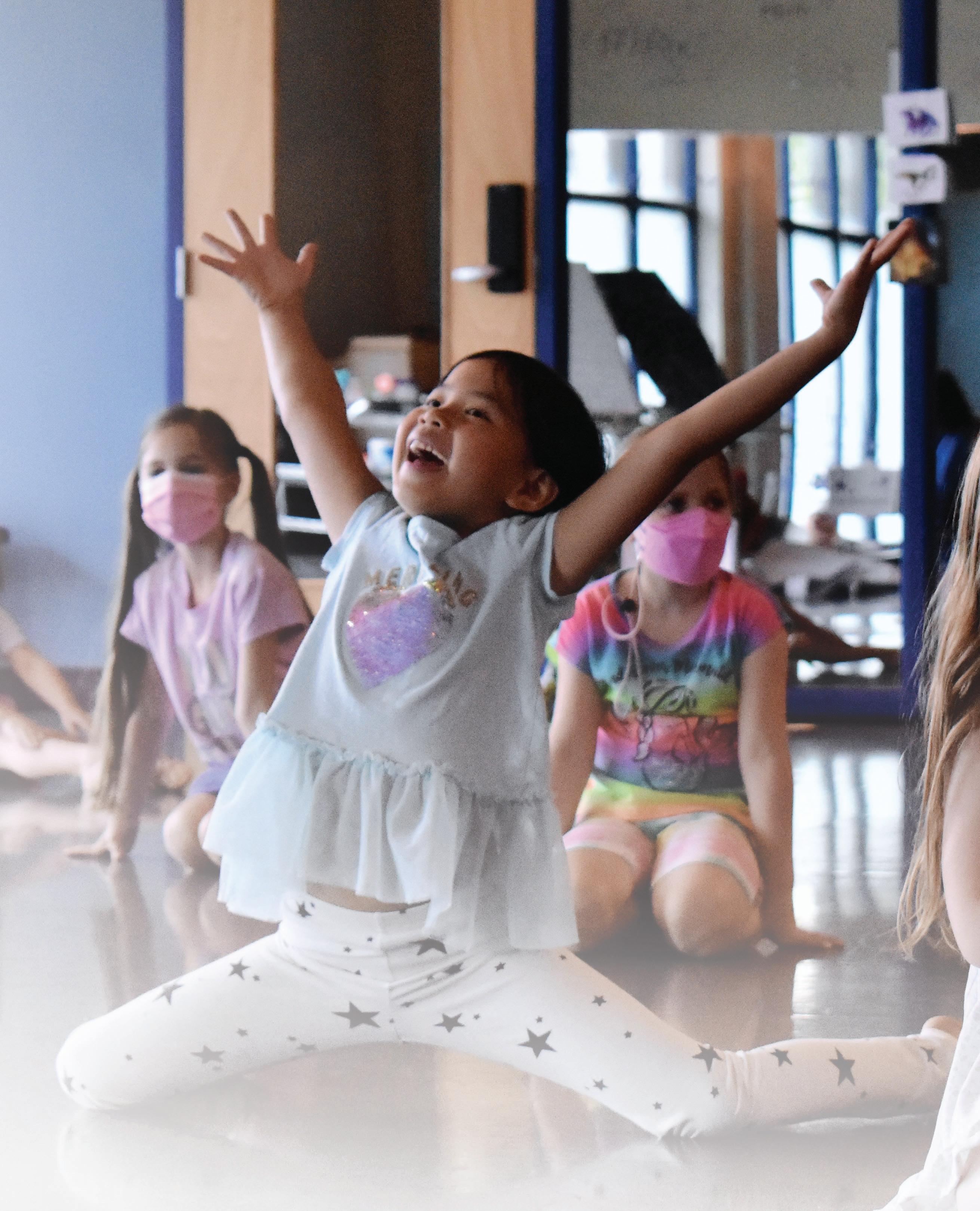
Young Dancer Program
entering K-2nd grade: Ballet, Tap, Hip Hop
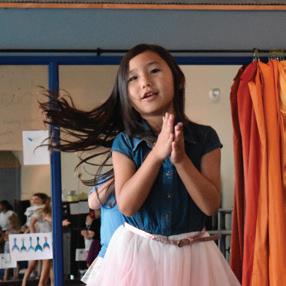
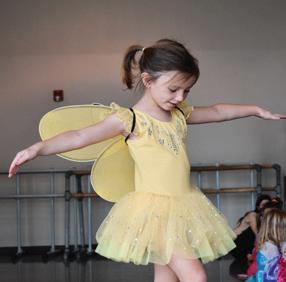
Dance Artist Program



entering 3rd-12th grade: Ballet, Modern Dance, Tap, Hip Hop

VISIT US ONLINE FOR -

• camp & class descriptions
• registration
• birthday parties
• adult classes

Deciding between day camp or residential (overnight) camp is one piece of the decision for families. Camp is an experience and not limited to a singular location. Campers can develop the same skills, both hard and soft, whether they’re sleeping away from home or returning to their own beds each night. While there are differences between day and residential camps, above all else, the most important outcome of this decision is finding the right fit for your camper and family.
This begins with knowing your camper. Many overnight camps begin taking campers between ages 7-9 years old. However, some children may be ready at 6 and some others may not be ready at 10. While there is no clear, linear checklist to determine whether day or overnight camp is right for your child, the following questions can help guide that conversation:

» What is the primary reason for wanting to go to camp?
» Has your child ever spent multiple nights sleeping away from home?
» What’s your budget for camp?
» Can your child bath and dress themselves independently?
» How far away from home do you want your child’s camp experience to be?

» What activities are important to your camper’s experience?
There's an adventure for every age at the Dauphin Island Sea Lab Camps, Excursions, Classes, and more are offered year-round What will you discover on your next visit? Make plans today at www.disl.edu.




These questions can help begin a dialogue with your family about which camp experience is the best fit for you. The choice of day versus residential camp is one important aspect of the overall decision. But even then, make sure you follow up with those potential camps. Talk to directors. Ask for tours. Ask for references. Do your due diligence. In the end both you and the camp want this summer to be the first of many and the beginning of a great relationship.
For more information, visit https://www.acacamps.org/.
» Summer Camp on Clear Creek: a faith based traditional summer camp for grades 1st - 12th





» Bethany’s Kids: an inclusion camp for campers of all abilities grades 4th - 8th

» Special Session: an inclusion camp for adults of all abilities age 19 and older

» Youth Folk Camp: a folk art, music, and farm based camp for grades 5th - 12th
The McDowell Camp and Conference Center is a ministry of the Episcopal Churches in the Diocese of Alabama

https://campmcdowell.org/

Years of living with the complications of obesity often lead people to consider having weight loss surgery, known as bariatric surgery. Weight loss surgery can be a lifesaver for people who are considered obese.
Whether restricting food or bypassing the GI tract, bariatric surgery is a tool to reduce hunger and appetite. It also increases the feeling of fullness or being satisfied with a smaller amount of food than before surgery. The body achieves a new balance of energy, unlike dieting, which is depriving the body. Finally, significant weight loss improves the way that the body metabolizes fat. Most people are able to return to work in one to two weeks after surgery.
The primary benefit of bariatric surgery is obvious - weight loss. The benefits of the surgery may also include:
» Achieve more consistent results than lifestyle counseling and prescriptions.
» Improve overall quality of life.
» Reduce or eliminate other health conditions that often accompany obesity, such as type 2 diabetes, sleep apnea, asthma, cardiovascular disease, cholesterol levels and joint problems.
» Reduce need or dosage for medications that address obesity-related conditions. (Be sure to talk with your doctor(s) before making changes in medications).
» Increase ability to participate in physical activities.
» Increase self-esteem and desire for social interaction while decreasing stress and/or depression symptoms.
» Some studies also suggest that people live longer after weight loss surgery, compared to those equally obese people who do not have surgery.
You might ask, “What is bariatric surgery?” The term includes various types of procedures aimed at restricting food intake and/or causing food to pass through the gastrointestinal (GI) tract without being fully absorbed or digested. Along with weight loss, bariatric surgery provides several other benefits.

General guidelines for bariatric surgery candidates include:
» Men and women who have a Body Mass Index (BMI) that is higher than 40.
» Those with a BMI of 35 to 40 who have another health condition, such as heart disease, sleep apnea or type 2 diabetes.
» Women who are more than 80 pounds overweight or men who are over 100 pounds overweight.
Studies show that more than 90 percent of those previously affected by severe obesity are able to maintain at least 50 percent of the weight they lose after bariatric surgery. It’s important to remember that bariatric surgery is most effective for those who are willing to make significant lifestyle changes for nutrition and exercise. Another component of success is understanding the stresses that lead to overeating and commit to other ways of resolving the issues.
If you are interested in learning more about surgical weight loss at Princeton Baptist Medical Center, please call 205-783-7991.



For Alabamians, a ski or snowboard trip is just a few hours away, though the sport may be uncommon in our area due to lack of snow.

Before hitting the slopes, keep a few things in mind so that an injury does not put a damper on the holiday.

“Some of the most common injuries in skiing are knee ligament injuries, shin-bone fractures, and shoulder/collarbone injuries,” says Aaron Casp, M.D., an assistant professor in the Department of Orthopaedic Surgery at the University of Alabama at Birmingham and a physician with UAB Medicine’s Sports and Exercise Medicine clinic. “We see the same injuries in snowboarding, but we frequently see wrist injuries or wrist fractures as well.”
Casp, who is also a team doctor for the United States Alpine Ski Team, has some recommendations for staying safe and making sure a ski vacation remains fun and injury-free.
“Ice and snow are obviously slippery, and you can fall at any time,” Casp says. “An appropriately fitted helmet can protect the most important part of your body. Ski boots, skis and bindings that fit and are well-maintained will ensure they release and not overly torque your knee when you fall.”
Casp says, while mimicking the demands of skiing and snowboarding is not easy here in Alabama, being in “ski shape” can be accomplished with some at-home workouts. “The most important muscles that get fatigued during snow sports include your quadriceps, hip abductors and glutes,” he said. “There are a number of ski preparation workouts on the internet, and they usually involve some combination of squats, lunges and plyometrics. This should start several weeks before your trip, and can significantly decrease your risk of a knee injury if your legs begin to fatigue.”
“When you get to the mountain, make sure you are aware of your abilities, and stick to terrain that is appropriate for your level,” Casp says. “If this is your first time, I highly recommend a professional lesson or ski school.”
The altitude of mountains in western states is high, and the air is very dry, quite different from the Alabama climate, says Casp. “It is much easier to get dehydrated, so make sure to drink lots of water, bring Chapstick and hand lotion. Also, alcohol can affect you considerably more at high altitude and cause faster dehydration. This can impair your judgment and make for dangerous skiing — not to mention the nasty hangover you will feel the next day.”
more delight
Experience SoundWaves — our yearround, indoor/outdoor upscale resort water attraction. This exclusive modern oasis offers something for everyone, from incredible thrill rides to relaxing indulgences, including an adults-only pool and bar.




SoundWavesGO.com
more connection


 By Audra Claire Boyd
By Audra Claire Boyd
Walt Disney World is often considered a destination for families with school-aged children, but it can also be a wonderful trip for families with babies. Many families have children of all ages, but if you include a baby, your schedule will likely look different than that of families with older children. You can make it magical for all.
Lodging is one of the first decisions you’ll make when planning your trip. Traveling with a baby will present particular needs. The goal is to find the resort that best matches your family’s personality. Here are a few items to think through:
• Do you plan to spend more time in one park over another?
• Will you keep a stroller with you when traveling from room to parks?
• Does your baby need a separate room to nap/ sleep in?
One of the largest decisions will be where you stay, sleep and rest. If budget allows, consider staying in a resort that gives you the ability to easily hop in and out of parks for mid-day breaks. This will be much easier if your resort is a quick monorail, Skyliner or boat ride away. This gives you the ability to leave your stroller as-is when boarding whereas on a bus you’ll be required to collapse your stroller. After long hours in the parks, you probably won’t want to move a sleeping baby when traveling back to your resort. A stroller for the parks is highly recommended. Keep Orlando’s temperatures in mind when planning. Front carriers, while convenient, can be very hot.
I love the Boardwalk area resorts for many families! You're within walking distance of both Epcot and Disney’s Hollywood Studios, and there's tons of entertainment, transportation options, and dining nearby. I highly recommend Disney’s Beach Club Resort and Disney’s Boardwalk Inn for families traveling with babies. Consider a one-Bedroom Villa at either of these resorts. These rooms offer larger balconies, washers and
dryers, living areas and separate bedrooms which come in handy for nap time. You’ll also find full kitchens in these rooms.
Maybe you're interested in the Epcot/ Hollywood Studios area but would like a bit of a different "feel.” In this case Disney’s Riviera Resort may be a good option for you. With the aesthetics of a beautiful European resort and rooms that are pure luxury, you're sure to enjoy your stay here. Located along Disney's Skyliner path, you'll enjoy easy access to Epcot, Disney’s Hollywood Studios and several nearby resorts.
Also located along Disney's Skyliner path is Disney's Caribbean Beach Resort, a great option at a lower price-point. Understand that there are no elevators in these buildings. Guests who are unable to use stairs, or those with strollers, will need to request a ground floor room. There can be a lot of walking involved at this resort, so I highly suggest a preferred room that will assure you’re in a location closer to transportation boarding stations. This is a wonderful, brightly-themed resort that is well-suited for families.

The Magic Kingdom Park hotel area is another one of my favorites for families. If you're looking for the classic fairy tale vacation, then Disney’s Grand Floridian Resort & Spa might be the perfect fit for you. Disney’s Polynesian Village Resort will transport you to a slower paced lifestyle. This gorgeous location is perfect for those who want immersive theming and a laid-back atmosphere. At both of these resorts you’ll enjoy monorail access, incredible dining, fantastic pool areas, and you’ll even have a chance to view the Electrical Water Pageant as it passes by on Seven Seas Lagoon.
Disney’s Wilderness Lodge is a hidden gem for families. As with Disney’s Beach Club Resort and Boardwalk Inn, I suggest a one-bedroom Villa which gives you a bedroom that can be closed off during nap time, as well as a full kitchen, and washer and dryer. At this resort you’ll enjoy water access to Magic Kingdom, a great pool area, and immersive dining options. Storybook Dining at Artist Point allows guests to interact with Snow White and her dwarves in a beautiful, storybook setting.
Available at all resorts, “Kids Night Out” is a childcare provider offering in-room sitter options for babies over the age of 6 months. Sitters are certified in child/infant CPR and basic first aid. They’ll arrive with age-appropriate toys and books, ready to entertain until you return. This is a great option for parents who’d like an evening out.
Baby Care Centers available at Walt Disney World Parks make feeding, changing and nursing a stress-free experience. You’ll find private nursing rooms with rocking chairs, feeding areas with highchairs, kitchens, changing rooms and a main room with entertainment and additional seating.

If your baby sleeps well in a stroller, consider using this time to ride some of the adult attractions. You’ll have the opportunity to utilize Disney’s Rider Swap program which allows one parent to wait with the baby while the other enjoys a ride. When he or she returns, the second parent can ride the same attraction without waiting in line.
One of the keys to an enjoyable Walt Disney World trip is scheduling activities appropriately for the needs of your family and the amount of time you have. It’s always better to exceed your expectations rather than be disappointed that you didn’t accomplish all you had planned.




Visiting Walt Disney World Resort with a baby can be so much fun! Spend a day relaxing at your resort pool. Plan for some down time, and plan to pop in and out of the parks as needed. Choose a resort that allows you to easily travel between your room and parks. Cherish this experience and create lasting memories with your little one. Even though they might not remember it, you will, and you’ll remember the reactions on their face as they experience the magic for the first time!
Audra Claire Boyd is an Alabama native, living in Vestavia Hills with her husband Michael. She is a Travel Advisor with a passion for helping families create cheery vacation memories that last a lifetime.
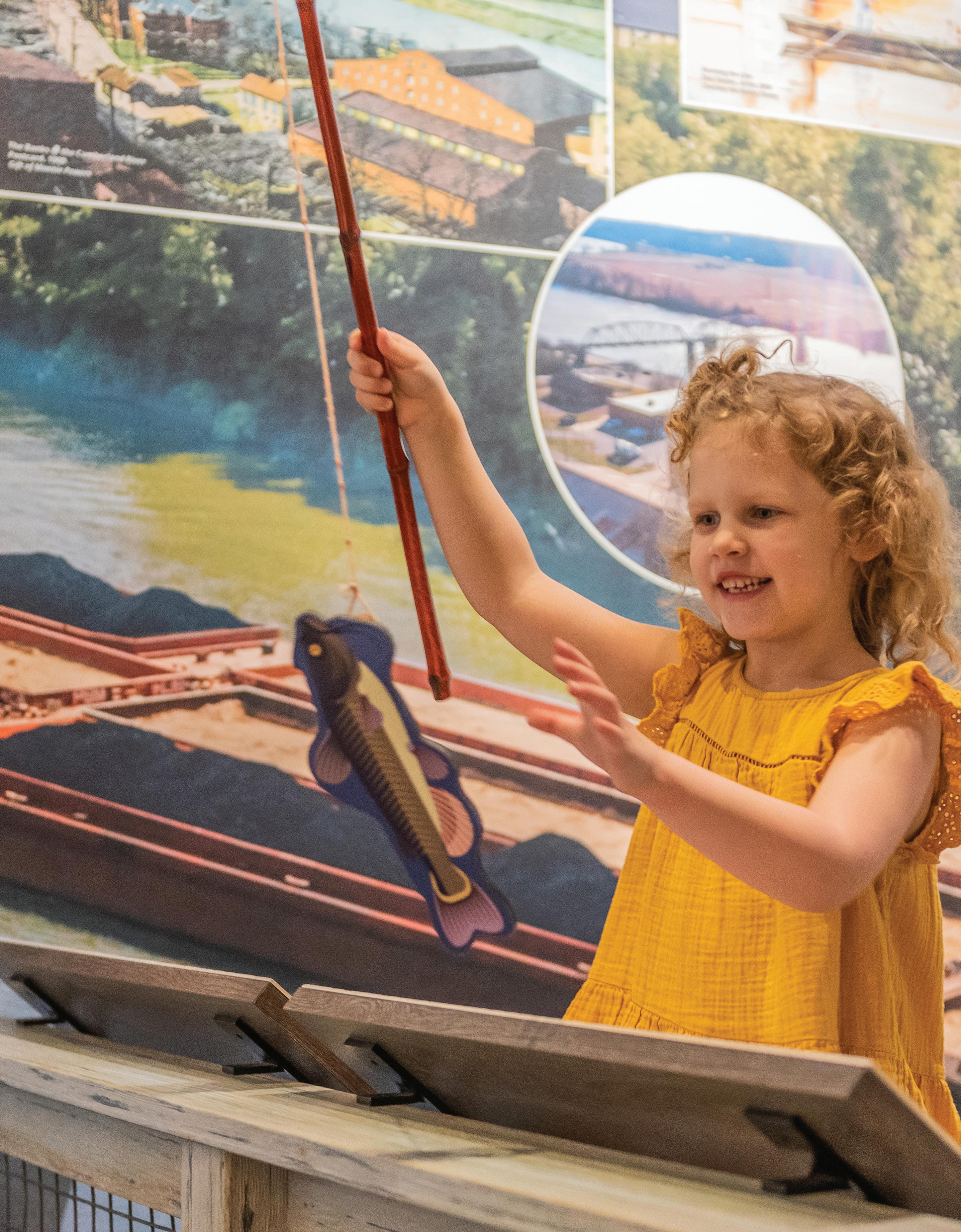

Welcome to our new and improved Birmingham Parent calendar of events for 2023!
We’ve streamlined a bit and tried to highlight those events we think will be the most appealing to families. You can find more details about every entry on our website or use the QR code provided, as well as other events that didn’t make the print calendar. If you see "MORE INFO" in a listing, remember you can access more information online at birminghamparent.com. You can also upload your own great events online as well. Look to the online calendar for more great local sports events, exercise classes, conferences and so much more.

01 WEDNESDAY
The Den's Pancake Eating Contest
11am – 2pm, The Den by Denny's, Think you have what it takes to be crowned Pancake King or Queen? Come test your skills at our pancake eating contest at The Den! The winner will reign supreme as the ultimate pancake champion (and also receive a pretty sweet prize)..
MORE INFO
02 THURSDAY
All Together Storytime
10:30-11am, Emmett O’Neal Library. Informal storytime with lively music that seeks to build positive relationships with books and the library. In the meeting room or outside on the lawn when weather allows..
MORE INFO
PJ Storytime
6:30-7pm, Hoover Public Library. 205-444-7800.
MORE INFO
03 FRIDAY
Alabama Ballet Presents Cinderella
7:30pm, BJCC Concert Hall, No video or photography allowed. Children 2 and under do not require a ticket if they will sit in a lap. Health and safety guidelines as required. No refunds or exchanges. $45 - $65
MORE INFO
04 SATURDAY
History of Birmingham Rock & Roll Art Exhibit
11 a.m.-3 p.m., East Village Arts, East Village Arts (EVA) presents "History of Birmingham Rock & Roll," a visual art show documenting rock & roll activity in the city from the 1950s until recent times.
MORE INFO
The Market at Pepper Place
7am-Noon. The outdoor market is BACK and has three areas of tents with farmers, makers and food vendors, live music and Chef Demos at 9am. You'll find only Alabama grown, raised, & made items •Beginning late January to early April is what we call the "Winter Market" with fewer weekly vendors, focusing on home.
MORE INFO
Xtreme International Ice Racing XiiR
6:30pm, Pelham Civic Complex & Ice Arena, ADMISSION CHARGED.
MORE INFO
Teen Watercolor Painting
2-3:30pm, Homewood Public Library. Interested in learning how to paint with watercolors? Ms. Cat is going to show you how! All supplies provided. Open to 6th-12th graders. Register online.
MORE INFO
05 SUNDAY
Wee Ones
9:30-10am, Homewood Public Library.
MORE INFO
10 FRIDAY
Cornerstone's 18th Annual Schoolhouse Rock 7 -11pm, Regions Field, Keep Rockin' as our Junior Board hosts our 18th Annual Schoolhouse Rock at Regions Field - voted Best Charity Event 6 years in a row by About Town Magazine! Guests will enjoy a silent auction, live music, event games and giveaways! Tickets include complimentary beer, wine and heavy hors d'oeuvres. As always, 100 percent of the proceeds benefit the students at Cornerstone Schools of Alabama. #Rockin4Kids, $60 - $65
MORE INFO
11 SATURDAY
12th Annual Holi Festival
11am-4pm, Birmingham Museum of Art, Join the BMA and the Indian Cultural Society for the 12th annual Holi Festival, the Indian celebration of color, sponsored by Medical Properties Trust. This popular event brings communities together for a fun-filled day celebrating Indian culture and featuring music, dance, food, henna, art-making, gallery exploration and the throwing of the colors.
MORE INFO
The Arc of Central Alabama's - Shamrock Shindig
6-9 pm, Haven. All proceeds from the Shamrock Shindig go to support The Arc of Central Alabama, Alabama's largest provider of services for those with intellectual and developmental disabilities. Your support of this event will help provide much-needed resources like food and medical supplies for over 900 individuals the Arc serves every day..
MORE INFO
PLEASE NOTE: Calendar information should be uploaded to our website at https://portal.cityspark.com/EventEntry/EventEntry/BirminghamParent and may appear in print if uploaded by deadline. You may also go to www.birminghamparent.com and simply click on the calendar icon. Information cannot be accepted over the phone. Birmingham Parent publishes a calendar 6 times a year. January events are included in the November/December issue. Deadline for the May/June 2023 issue is April 8, 2023. Guidelines: Birmingham Parent’s calendar is intended to be a resource and service to the community and our readers. Events which are open to the public, fundraisers, free classes, etc., are events that may be included in our monthly calendar. We reserve the right to reject any event or listing due to rules or space restrictions. For questions regarding calendar entries, call 205-624-2405 or e-mail info@birminghamparent.com. Be sure to check ahead with the actual venue as events are subject to change.
Teen Drawing Class
4-5pm, Homewood Public Library, (6th-12th Grade) Interested in learning the basics of drawing? Join us as local artist MiKayla Hammock teaches you how to develop your artist skills All supplies provided. Register online.
MORE INFO
16 THURSDAY
Upcycling Crafternoon
3:30-4pm, Homewood Public Library, (K-5th Grade) We're going green with a monthly upcycling crafting program for Kids. We'll be re-purposing the things we usually throw away in fun ways and expressing our creativity as well. Register online.

MORE INFO
17 FRIDAY
18 SATURDAY
Birmingham Parent’s Annual Special Needs Expo
10am-3pm, The Exception Foundation, Homewood. See and visit with all sorts of services and products for children and adults with special needs. Great giveaways, stage with local entertainment. Wonderful information, all under one roof. Admission is FREE. Presented by the Exceptional Foundation Sponsored by Children’s of Alabama, Alabama Game Changers, Griffin Mobility, NBC 13, 106.9 FM and 107.3 FM the Mix.
MORE INFO
22 WEDNESDAY
Girl Scout Cookies Day
11am-2pm, The Commons on the Green at UAB. Get ready for some seriously sweet treats! Our talented chefs will be creating delicious desserts using everyone's favorite Girl Scout cookies. Don't miss out on this oneof-a-kind event in The Commons. $6.
MORE INFO
SCAN CODE TO VIEW MORE EVENTS

ONLINE:
01 SATURDAY
David Lee Ultimate Elvis
7pm. Forum Theater At The BJCC $30 - $40.
MORE INFO
02
SUNDAY
Paws in the Park
2-5pm, Pelham City Park. This event will benefit Pelham Pet Pantry, a local non-profit that focuses on helping families keep pets from going hungry. Well-behaved pets on leashes are welcome.
MORE INFO
04
TUESDAY
A Very Special Easter Egg Hunt
5:30-7pm, Pelham City Park Football Field. MORE INFO
05
WEDNESDAY
Hits! The Musical 7:30pm, BJCC Theatre $29 - $99.
MORE INFO
07 FRIDAY
08
SATURDAY
Blippi: The Wonderful World Tour 2pm. The Alabama Theatre, SENSORY NOTICE: This show contains Flashing Lights, Haze (Fog), and Confetti Children under 2 years old do not require a ticket to sit on a parent's lap. 205-252-2262 $35 - $6.
MORE INFO
09
SUNDAY
Easter
15
SATURDAY
17th Annual Scholarship Run presented by Viva Health
8-10am. The Battery, Each spring, the UAB National Alumni Society hosts its annual Scholarship Run presented by Viva Health. Started in 2007, the Scholarship Run has allowed the NAS to raise $975,000 to help support student scholarships.
MORE INFO
2023 Red Shoe Run: Rockin' 5K 8am-Noon, Downtown Birmingham. Red Shoe Run: Rockin’ 5K and 1 Mile Walk is an annual celebration of family, fundraising and awareness for Ronald McDonald House
Charities of Alabama. Participants can run/ walk two course options: 5K and 1 Mile. Can’t make it in-person? Select a Virtual or Snoozer option during registration! All money raised through the Red Shoe Run stays at the Ronald McDonald House in Birmingham to keep families together .
MORE INFO
19 WEDNESDAY
Story Sprouts
9-10am, Hoover Public Library.
MORE INFO
20 THURSDAY
All Together Storytime
9:30-10am , Informal storytime with lively music that seeks to build positive relationships with books and the library. In the meeting room or outside on the lawn when weather allows.
MORE INFO
21 FRIDAY
Hansel & Gretel
7:30pm, Dorothy Jemison Day Theater, Composer Engelbert Humperdinck's fairytale opera, based on the classic story from Brothers Grimm, is perfect for all ages! Featuring a wonderful cast of rising opera stars along with the Opera Birmingham Chorus, accompanied by members of the Alabama Symphony Orchestra. Hansel & Gretel is sung in German with projected English translations. The performance length is approximately two hours with one intermission. $10 - $25.
MORE INFO
Mutt Strut 2023
7:30am-Noon, Hand in Paw, handinpaw.org. $1 - $30
MORE INFO
22 SATURDAY
28 FRIDAY
Movie Night with Chris Confessore
7-8:30pm, Alys Robinson Stephens
Performing Arts Center, Join us for an evening of cinematic scores and film classics. Your favorite movie works will be performed by the Alabama Symphony Orchestra. $25 - $65.
MORE INFO
29 SATURDAY
12th Annual Bob Sykes BBQ & BLUES Festival
11am-8pm, DeBardeleben Park in Downtown Historic Bessemer. The event will combine the best of blues music and legendary Bob Sykes Bar B Q. Be sure to bring your chair or blanket and set up your spot for the day to enjoy talented blues musicians. $20.
MORE INFO

n Aldridge Botanical Gardens 3530 Lorna Road, Hoover. 205-682-8019. www.aldridgegardens.com

n Alabama Jazz Hall of Fame 1631 Fourth Ave. N., Birmingham. 205-254-2731. www.jazzhall.com
n Alabama School of Fine Arts 1800 Rev. Abraham Woods, Jr. Blvd.. www.asfa.k12.al.us
n Alabama Sports Hall of Fame 2150 Richard Arrington Blvd. N., Birmingham. 323-6665. www.ashof.org
n Alabama Wildlife Center 100 Terrace Dr., Pelham. 205663-7930. www.awrc.org
n American Village
Birmingham. 205-414-3900. www.bbgardens.org
n Birmingham Children’s Theatre
1001 19th St. North, Birmingham, AL, 35203, 205-458-8181. www.bct123.org
n Birmingham Civil Rights Institute
16th St. N., Birmingham. 205328-9696. www.bcri.org
n Birmingham Museum of Art Hand-Held: The Four Seasons in Chinese Painting. 10am-5pm, Birmingham Museum of Art. Through the lens of the four seasons, this exhibition explores the intimate visual storytelling experience found within small-scale Chinese landscape paintings. (205) 254-2565. Through March 5.
n Birmingham Zoo 2630 Cahaba Rd., Birmingham. 205-879-0409. www.birminghamzoo.com
n Heart of Dixie Railroad Museum
1919 Ninth St., Calera. 205-668-3435. www.hodrrm.org
n Jefferson County Library Cooperative
Find a library close to you for all kinds of fun events and enrichment! www.jclc.org
n McWane Science Center • IMAX Films

n Oak Mountain State Park 200 Terrace Drive, Pelham. 205-620-2520. www.alapark.com
n Ruffner Mountain Nature Center 1214 81st St. S., Birmingham. 205-833-8264, www.ruffnermountain.org
n Shelby County Public Libraries
Find a library near you for all kinds of fun events and enrichment! www.shelbycounty-al.org
n Southern Museum of Flight 4343 73rd St. N., Birmingham. 205-833-8226. www.southernmuseumofflight.org
n Tannehill Ironworks Historical State Park 12632 Confederate Parkway, McCalla. 205-477-5711. www.tannehill.org
Highway 119, Montevallo. 205-665-3535. www.americanvillage.org
n Barber Motorsports Park 6040 Barber Motorsports Parkway, Leeds. 205-298-9040. www.barbermotorsports.com
n Birmingham Botanical Gardens www.bbgardens.org/ documents/treasuremapforweb. pdf 2612 Lane Park Rd.,
Ways of Seeing: Sports and Games. 10am-5pm, Birmingham Museum of Art. An exhibition drawn from across the Museum's permanent collection that shows the influence of sports and games on art. (205) 254-2565, www. birmingham365.org. Through May 21.
2000 Rev. Abraham Woods Jr. Blvd., Birmingham. 205-2542565, www.artsbma.org
n Birmingham Public Libraries Find a library near you for all kinds of fun events and enrichment! www.bplonline.org
200 19th St. N., Birmingham. 205-714-8300, www.mcwane.org.
n Moss Rock Preserve Preserve Parkway, Hoover. 205-739-7141. www.hooveral.org
n Vulcan Park 1701 Valley View Drive, Birmingham. 205-933-1409. www.vulcanpark.org
As always check ahead for hours and dates of operation, ticket pricing and more.


